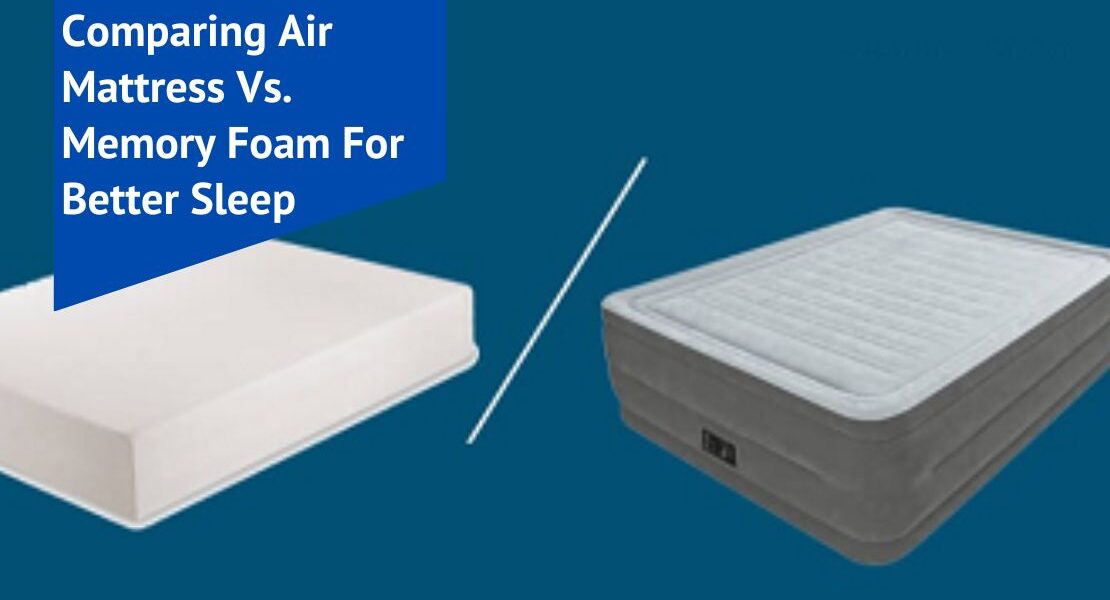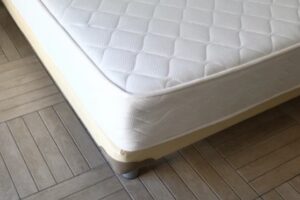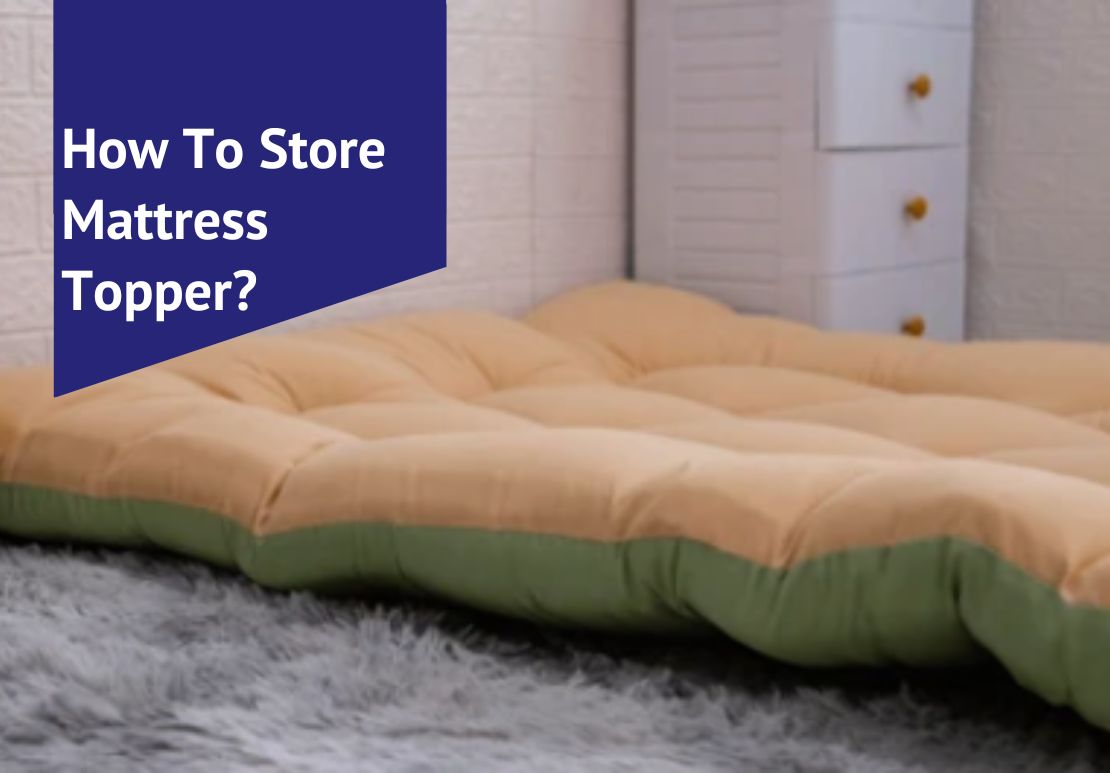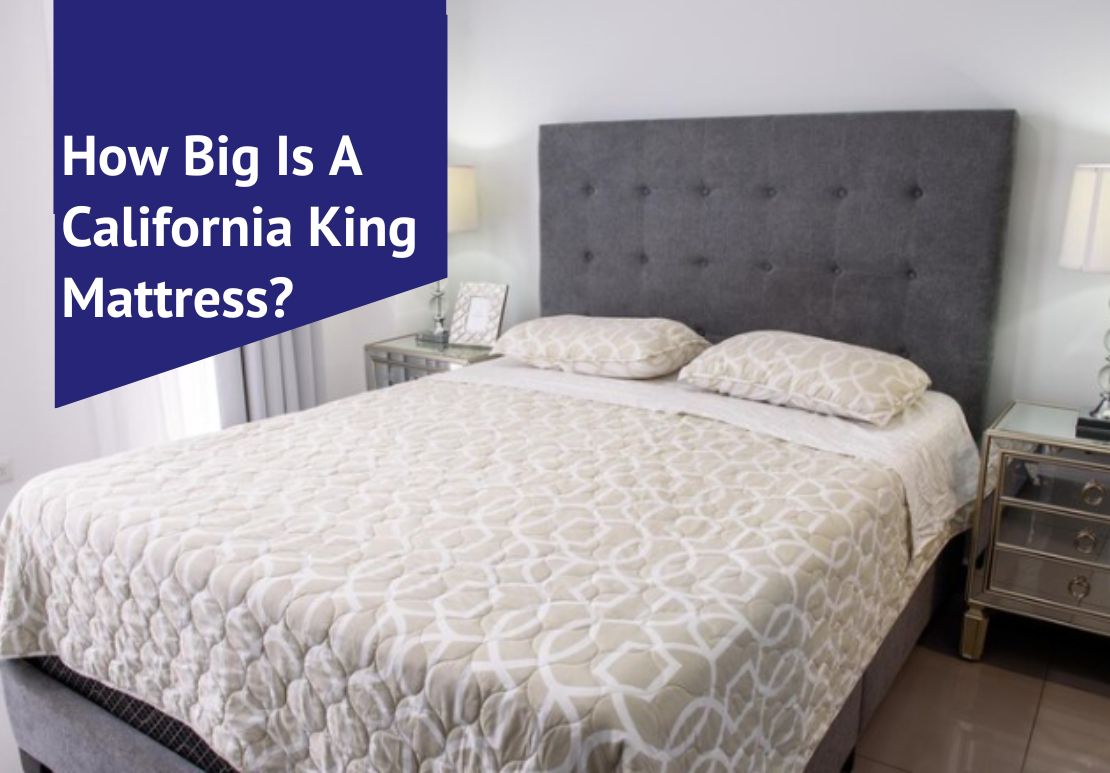Choosing the right mattress is essential for a good night’s sleep and can be challenging. Memory foam offers contouring comfort, but did you know that air mattresses provide customizable firmness? This article will delve into the benefits and drawbacks of each, guiding you toward finding your best rest.
Discover which mattress might send you peacefully into dreamland.
Table of Contents
Key Takeaways
- Memory foam mattresses excel in providing contoured support and distributing body weight evenly, which can help reduce pressure points and improve circulation for a more comfortable sleep.
- Air mattresses offer customizable firmness by allowing you to adjust the air level, making them versatile for various preferences and ideal as temporary or portable bedding solutions.
- While memory foam tends to hold heat, potentially causing some sleepers discomfort, air mattresses usually offer better temperature control due to their adjustable nature.
- Memory foam is generally more expensive but may last longer and provide consistent comfort and support. In contrast, air mattresses are typically budget-friendly but may not have the same durability or long-term benefits.
- Both memory foam and air mattresses have unique advantages, such as motion isolation for memory foam and ease of setup for air mattresses; choosing between them should be based on personal sleep needs, health considerations, and lifestyle preferences.
What is a Memory Foam Mattress?
Delving into the specifics, a memory foam mattress stands out for its unique material that molds to your body in response to heat and pressure. This feature allows for even weight dispersion and provides unparalleled support and comfort during sleep.
The mattress is designed with multiple layers of foam, each serving a purpose, from providing a soft touch on the surface to ensuring firm support underneath.
Memory foam offers relief from pressure points by contouring precisely to your shape. It’s also known for its motion absorption qualities, making it ideal for those who share a bed; movements are less likely to be felt across the entire sleeping surface.
This personalized comfort can enhance blood flow and muscle recovery throughout the night, leading to restful sleep and rejuvenated mornings. Also, ensure that you opt for a high-quality memory foam mattress to ensure it lasts for years.
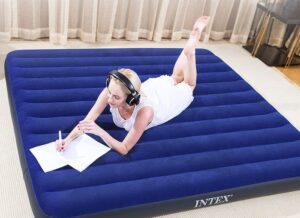
What is an Air Mattress?
Shifting focus from the dense composition of memory foam, an air mattress introduces a different sleep experience altogether. This type of mattress is typically made from PVC or other robust materials and can be inflated to your desired firmness level using an electric pump or manual effort.
Its adjustability is key—owners can precisely control the air volume inside, which means they can tailor the sleeping surface’s firmness according to their personal comfort preferences.
Air mattresses are not only for indoor use; many people find them incredibly useful as a portable bedding option during camping trips due to their lightweight design and easy storage capabilities.
With built-in pumps that some models offer, setting up your bed becomes quick and hassle-free, allowing more time for relaxation or outdoor activities. They range in sizes from small enough for one person to large enough for multiple sleepers, making them versatile additions to any home—whether accommodating guests or as part of a space-saving furniture set-up.
What is the difference between memory foam and air mattresses?
Memory foam mattresses provide more support, pain relief, and motion isolation, while air mattresses offer adjustable firmness and are typically more affordable. Keep reading to learn more about the key differences between these two types of mattresses.
Support in memory foam vs air mattress to choose the best mattress
Air mattresses are customizable when it comes to firmness, allowing for a personalized sleep experience each night. Simply adjust the air levels to achieve the desired support—perfect for those who prefer a firmer or softer sleeping surface on different occasions.
They’re convenient for guests with varying comfort preferences, as they can easily modify the bed’s feel.
Foam mattresses take support up a notch by evenly distributing body weight and reducing pressure points. This design promotes improved blood circulation and muscle recovery through contouring properties that align closely with your body shape—a boon for uninterrupted sleep and reduced tossing and turning throughout the night.
Pricing of memory foam mattress vs air mattress
Memory foam mattresses generally have a higher price range compared to air mattresses. The cost of a memory foam mattress can vary based on factors such as thickness, density, and brand reputation.
On the other hand, air mattresses are typically more budget-friendly and offer a cost-effective option for individuals seeking temporary or portable sleeping solutions. When considering pricing, homeowners must evaluate their long-term investment in sleep quality alongside their financial considerations.
As you navigate the comparisons between memory foam and air mattresses’ pricing, assessing how these costs align with your desired sleep preferences and overall health considerations before making an informed decision about your next mattress investment is important.
Pain/pressure relief
Memory foam mattresses offer exceptional pain relief and pressure point alleviation, providing a supportive sleeping surface that conforms to the body’s contours. This feature is especially beneficial for individuals with joint pain or those seeking relief from muscle tension.
On the other hand, air mattresses also provide adequate pressure relief by allowing users to adjust firmness levels according to their comfort needs, potentially easing discomfort in areas such as the lower back and shoulders.
Individuals who struggle with chronic pain may find that memory foam mattresses offer superior support and alleviate painful pressure points through their ability to distribute body weight evenly.
Sleeping hot
Memory foam and air mattresses differ in their ability to regulate temperature while sleeping. Memory foam mattresses tend to retain heat, potentially causing discomfort for some individuals.
This is due to the material’s tendency to contour to the body, reducing airflow and heat retention. On the other hand, air mattresses allow for better temperature regulation as they can be easily inflated or deflated to adjust firmness and airflow, reducing the likelihood of feeling excessively warm during sleep.
For homeowners seeking a cooler sleep experience, an air mattress may be a more suitable than memory foam. The inflatable nature of air mattresses offers an advantage in managing temperature fluctuations, making them a favorable choice for those who prioritize maintaining a comfortable sleeping temperature throughout the night.
Mattress upkeep
Maintaining a memory foam mattress involves regular rotation to prevent uneven wear and tear. Cleaning spills promptly with mild soap and water helps preserve the mattress’s longevity, while a mattress protector can safeguard against stains and moisture damage.
Air mattresses require occasional inspections for leaks or punctures, especially before camping trips. Storing them in a clean, dry area when not in use prolongs their lifespan. Additionally, following the manufacturer’s instructions for proper inflation and deflation is crucial for maintaining performance reliability.
Motion isolation
Memory foam mattresses are known for their exceptional motion isolation, making them an ideal choice for couples. The foam material absorbs movement and prevents it from transferring across the bed, ensuring minimal disruption when one partner shifts or gets in and out of bed.
On the other hand, while air mattresses may offer adjustable firmness and versatility, they generally have less effective motion isolation than memory foam mattresses.
A memory foam mattress provides superior motion isolation for homeowners seeking uninterrupted sleep without disturbances caused by a restless partner. This feature is particularly beneficial for individuals with light sleep who are easily disturbed by movements during the night.
Noise
Air mattresses with built-in pumps provide convenience and ease of use, but homeowners should consider their noise level. Some air mattresses can produce a slight humming sound as the pump works to maintain firmness throughout the night.
On the other hand, memory foam mattresses are virtually silent during use, providing a quiet sleeping environment without any mechanical or inflatable components causing disturbance.
For individuals seeking a peaceful and uninterrupted sleep experience, minimizing noise may be essential in choosing the right mattress. While air mattresses offer portability and adjustability, weighing these benefits against potential noise concerns is important when deciding for your sleep comfort.
Availability
Memory foam mattresses are widely available and offered by various retailers in-store and online. They come in multiple styles and sizes to suit different preferences and requirements.
On the other hand, air mattresses are also readily accessible, with options for purchase at department stores, outdoor gear shops, or online merchants. They cater to individuals seeking versatile sleeping solutions that can be used for camping or as temporary bedding accommodations.
With multiple distribution channels and brand options available for memory foam and air mattresses alike, homeowners can choose based on their specific needs, whether for everyday use or occasional scenarios like hosting guests or outdoor activities such as camping trips.
Durability
Memory foam mattresses are renowned for their durability, as they typically last between 8 to 10 years when properly cared for. The high-density structure of memory foam allows it to maintain its shape and support over time, ensuring long-lasting comfort and performance.
On the other hand, air mattresses can be prone to punctures or leaks that may affect their longevity. However, modern designs with enhanced materials offer improved durability compared to traditional air mattresses.
When maintained well, these advanced air mattresses can provide reliable use for several years.
Owner satisfaction
When it comes to owner satisfaction, both memory foam and air mattresses have their unique advantages. Memory foam mattresses are often praised for their ability to contour the body, providing personalized support and pressure relief.
This can improve blood flow, muscle recovery, and overall comfort for homeowners. On the other hand, air mattresses offer adjustable firmness options that cater to individual sleep preferences, allowing owners to customize their sleeping experience.
Homeowners who prioritize versatility and temporary sleeping solutions may find higher satisfaction with air mattresses due to their portability and ease of use. Conversely, those seeking long-term investment in a mattress that provides consistent support and pain relief may lean towards memory foam mattresses for better owner satisfaction.
Factors to Consider
Price range, sleep preferences, health considerations, and long-term investment should be considered when choosing which mattress to buy. These elements will help guide individuals in making an informed decision that best suits their needs and lifestyle.
Price range
Memory foam mattresses typically come in a wide price range to suit various budgets. The cost depends on factors such as the quality and density of the foam, as well as additional features like cooling technology or adjustable firmness settings.
On the other hand, air mattresses also offer a diverse price range based on size, brand, and extra features such as built-in pumps or increased thickness for added comfort. Both memory foam and air mattresses have options available for varying budget constraints.
When comparing prices between memory foam and air mattresses, weighing the long-term benefits against the initial investment is essential. While memory foam mattresses may require a higher upfront cost, they often provide better support and durability over time than lower-priced options.
Sleep preferences
Consider your sleep preferences when choosing between memory foam and air mattresses. If you prefer contouring support and pressure relief, a memory foam mattress might be your better choice.
On the other hand, if adjustable firmness and versatility are more important to your sleeping needs, then an air mattress could be the ideal option. Factors such as comfort preferences, body weight distribution, blood flow regulation, and muscle recovery play vital roles in determining which type of mattress aligns with your specific sleep requirements.
Investigate how each type of mattress affects restful sleep quality.
Health considerations
Memory foam mattresses are beneficial for individuals with specific health considerations. The contouring support and pressure relief they offer can help alleviate conditions such as insomnia by providing a comfortable and restful sleep surface.
Memory foam distributes body weight evenly, aiding in better blood flow and muscle recovery. For those concerned about support and pressure relief, memory foam mattresses cater to these needs, making them an excellent option for addressing health-related sleeping concerns.
Air mattresses also have certain health benefits to consider. Their adjustable firmness allows for customized comfort preferences, easing pressure points on the body. This feature is particularly useful for individuals with muscle or joint pain seeking a supportive sleeping surface.
Long-term investment
When considering a long-term investment in a mattress, evaluating factors such as durability, support, and overall owner satisfaction is essential. Memory foam mattresses are known for longevity due to the high-density foam construction that helps maintain shape and structure over time.
Additionally, they offer superior support and pressure relief, which can contribute to better sleep quality and overall health. On the other hand, air mattresses may be seen as a more versatile option for short-term needs but may not provide the same level of long-term comfort and durability.
Moreover, memory foam mattresses have been reported to exhibit higher overall owner satisfaction due to their ability to alleviate pain and improve sleep quality. With their ability to distribute body weight evenly while relieving pressure points, homeowners can experience enhanced blood flow and muscle recovery over time – making them a valuable long-term investment compared to air mattresses.
Other Types of Mattresses
Aside from memory foam and air mattresses, several other types of mattresses are available on the market. These include latex, innerspring, hybrid, and waterbeds. Each type has unique features and benefits catering to different sleep preferences and needs.
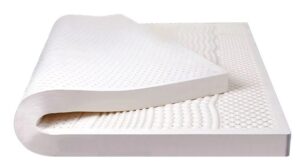
Latex
Latex mattresses offer a natural and eco-friendly option for homeowners seeking a supportive and durable bedding solution. These mattresses are known for their resilience, providing excellent support while contouring to the body’s shape.
Latex material is also hypoallergenic, making it suitable for individuals with allergies or sensitivities. Latex mattresses have an impressive lifespan, often lasting longer than traditional foam or innerspring options.
Moreover, latex mattresses excel in temperature regulation, ensuring a cool and comfortable sleep environment. The breathable properties of latex help dissipate body heat, preventing overheating during the night.
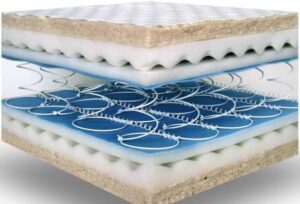
Innerspring
Transitioning from discussing latex mattresses to innerspring options, homeowners can explore a traditional mattress design that balances support and comfort. Innerspring mattresses feature steel coils or springs at their core, offering sturdy support and excellent airflow for temperature regulation.
These mattresses are known for their responsiveness, providing bounce and minimizing motion transfer during sleep. The durability of innerspring mattresses makes them a reliable choice for long-term investment, with varying firmness levels to suit different preferences and sleeping styles.
Innovations such as pocketed coils have enhanced innerspring mattresses, targeting specific pressure points and reducing the discomfort often associated with traditional coil designs.
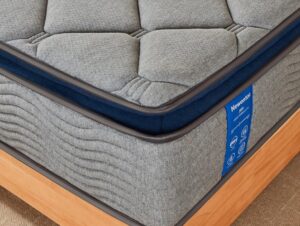
Hybrid
Hybrid mattresses combine the support of innerspring coils with the contouring benefits of memory foam. These mattresses cater to different preferences by offering a balanced feel that provides sturdy support and pressure relief.
With features such as motion isolation and temperature regulation, hybrid mattresses provide a versatile sleeping surface suitable for various needs.
Offering superior comfort and versatility, hybrid mattresses blend the best features of traditional innerspring and memory foam options. This combination caters to a wide range of sleep preferences, making them an excellent choice for homeowners seeking adaptable support throughout the night.

Waterbeds
Unlike hybrid mattresses that combine various materials, waterbeds offer a unique sleeping experience. Waterbeds utilize a water chamber as the primary support system, providing a distinct feel compared to traditional mattresses.
The adjustable firmness of waterbeds offers personalized comfort as the water level can be adjusted to suit individual preferences. Additionally, some homeowners find relief from back pain and better weight dispersion on waterbeds due to their ability to conform to body contours.
Moreover, heating and cooling options are included for added comfort for those seeking temperature control during sleep.
Which Mattress is Better?
Memory foam mattresses and air mattresses each offer unique features that cater to different sleep needs. Memory foam provides contouring support and pressure relief, distributing body weight to ease pressure points and promote better blood flow.
This makes it ideal for individuals seeking enhanced comfort and support for everyday use. On the other hand, air mattresses are versatile, allowing adjustable firmness levels to suit various preferences.
They can be used for camping or as temporary sleeping solutions, offering convenience and versatility.
When considering which mattress is better, homeowners should weigh their sleep preferences, health considerations, long-term investment goals, and practical usage scenarios such as camping or guest accommodation.
Both types of mattresses have distinct benefits; therefore, understanding individual needs is crucial in deciding which mattress will provide the best sleep quality.
Conclusion
After considering the features and benefits of both air mattresses and memory foam, it becomes evident that each mattress type offers unique advantages. Those seeking contouring support and pressure relief may find memory foam suitable, while individuals valuing adjustable firmness might prefer an air mattress.
With different sleep preferences and needs in mind, homeowners can decide to improve their sleep quality. Understanding the distinctions between these mattresses allows for tailored selections based on comfort preferences and long-term investment in better rest.
FAQs – Frequently Asked Questions
What is the difference between an air mattress and memory foam for better sleep?
An air mattress uses chambers filled with air for support, while memory foam contours to the body's shape and provides even weight distribution.
Which type offers better support for back pain – air mattress or memory foam?
Memory foam is often preferred for back pain as it conforms to the body, providing natural spinal alignment and pressure relief.
Can I adjust the firmness of an air mattress and memory foam according to my preference?
Yes, you can adjust the firmness of an air mattress by adding or releasing air; however, memory foam mattresses generally have a consistent firmness level.
Which type is more durable – air mattress or memory foam?
Memory foam mattresses are typically more durable than traditional PVC-based inflatable air mattresses due to their construction and materials used.
Do both types offer good motion isolation during sleep?
Memory foam excels in motion isolation due to its ability to absorb movement, while traditional air mattresses may transfer motion across the bed when one person moves.
Is an air mattress better than memory foam?
When it comes to comfort and support, memory foam tends to be superior to air mattresses. Memory foam conforms to the body, relieving pressure points and providing a more consistent sleeping surface. On the other hand, air mattresses can be prone to leaks and lack the same level of support as memory foam.
What is the disadvantage of an air mattress?
One disadvantage of air mattresses is that they can be punctured easily, leading to deflation and the need for repairs. Inflating and deflating them can also be time-consuming, and they may not provide the same level of support and comfort as a traditional mattress. Additionally, they can be noisy and may not be suitable for long-term use.
Is it safe to sleep on an air mattress every night?
Sleeping on an air mattress every night is generally not recommended, as they are designed for temporary use and may not provide the necessary support for long-term use. Prolonged use of an air mattress can result in back pain and discomfort. It's best to invest in a proper mattress for nightly sleep.

